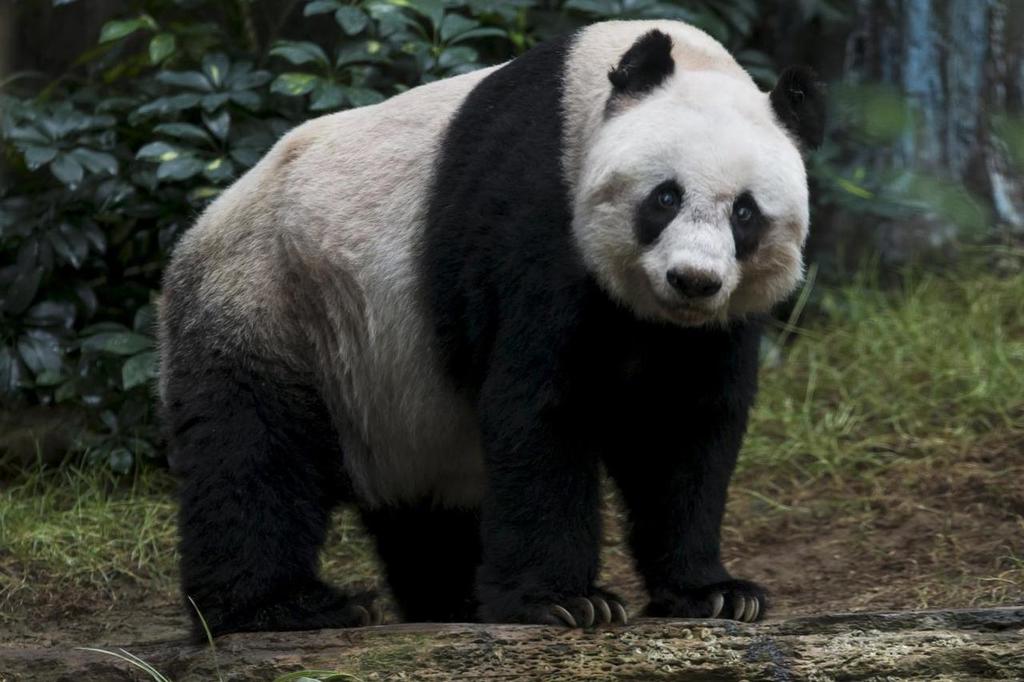The successful conservation of giant pandas was accomplished through education, dedication, and sheer political will.
Decades of committed and challenging conservation work has paid off as Chinese officials proudly announce that giant pandas are no longer an endangered species. Conservation efforts that included “panda diplomacy,” has raised the giant panda population in the wild to 1,800 in total.
This has moved the species from an endangered classification to ‘vulnerable,’ which is still a massive improvement.
PANDA POPULATIONS INCREASED DUE TO SUFFICIENT FOOD SOURCES
China’s panda reserves are located across mountain ranges that are fiercely protected by conservation groups. Their efforts in ensuring vast amounts of bamboo-filled forests have led to a positive outcome for the gentle giants. With the addition of ‘panda diplomacy,’ the bears have been able to breed beyond the geographical borders of China, increasing the panda population slowly but surely.

|Image Credit: Reuters / The Straits Times
In fact, just five years ago, the International Union for the Conservation of Nature (IUCN) had decided to change the giant panda’s classification from ‘endangered’ to ‘vulnerable,’ but it was not officially recognised by China. To its credit, China had instead challenged the decision.
“If we downgrade their conservation status, or neglect or relax our conservation work, the populations and habitats of giant pandas could still suffer irreversible loss, and our achievements would be quickly lost,” said China’s State Forestry Administration at the time.
Safe to say, China’s relentless efforts in raising the panda population is a definite success when taking into consideration that panda numbers recorded in 2000 were only 1,100 of them living in the wild, and 422 in captivity.
A MEANINGFUL WIN
Considering the many difficulties involved in breeding pandas, even reaching a ‘vulnerable’ classification should be considered a victory!
With female pandas ovulating only once a year, the challenge of conceiving can be extremely rare and difficult, seeing that the window for male insemination only lasts for 24 to 72 hours. Conservationists have the arduous task of being on a constant lookout for ovulating females, and making sure they have a male panda ready for mating at the same time.
The tiresome part of trying to breed the pandas happen when two ideal ‘candidates’ are found for mating, but both lack the mood to initiate. This is because pandas are solitary creatures by nature, and even in captivity, are kept in separate enclosures to prevent violent attacks among them.

As it happens, some male pandas experience genuine difficulties in mating with a female; in these cases, conservationists had to resort to artificial insemination.
In the event that a panda couple does mate successfully, the result of a pregnancy isn’t guaranteed. Panda fetuses have also proven to be quite obscure during ultrasounds, leading to cases of a mother showing signs of a pregnancy only a few weeks before birth!

| Image Credit: South China Morning Post
What adds to the general confusion are female pandas that aren’t pregnant who exhibit pregnant behaviour such as building nests, sleeping more, and eating less.
GIANT PANDAS ARE ALSO KNOWN AS THE ‘UMBRELLA SPECIES’ IN CHINA
What this means is the protection and conservation of the pandas causes a trickle down effect that benefits multiple species.
“The number of species such as Siberian tigers, Amur leopards, Asian elephants, and crested ibis has increased significantly,” said Cui Shuhong, director of the Department of Natural Ecological Protection in the Ministry of Ecology and Environment.

“Thanks to decades of collaboration between the Chinese government, local communities, companies, and NGOs, the giant panda’s future is more secure,” said World Wide Fund for Nature (WWF) Vice President for Wildlife Conservation, Colby Loucks.
“China’s successful conservation of giant pandas shows what can be achieved when political will and science join forces.”
"ExpatGo welcomes and encourages comments, input, and divergent opinions. However, we kindly request that you use suitable language in your comments, and refrain from any sort of personal attack, hate speech, or disparaging rhetoric. Comments not in line with this are subject to removal from the site. "























